Category Phyllosilicate Space group C2/m | Crystal system Monoclinic | |
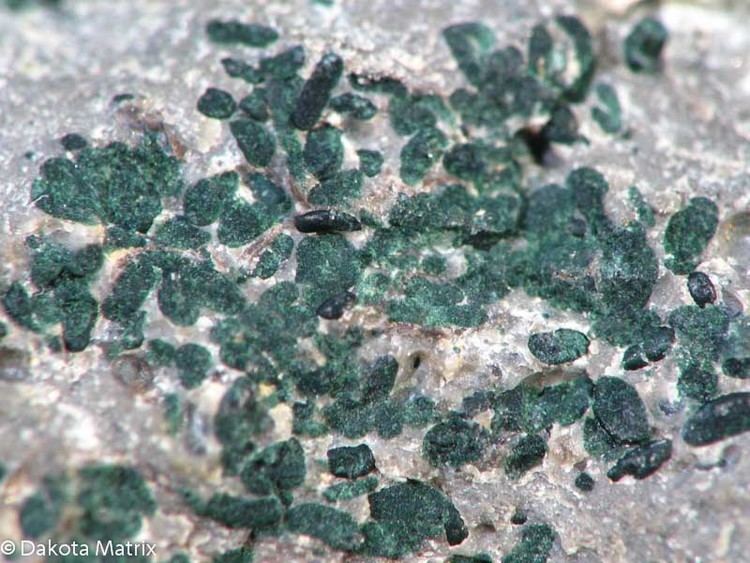 | ||
Formula(repeating unit) (K,Na)(Fe,Al,Mg)2(Si,Al)4O10(OH)2 Crystal class Prismatic (2/m)(same H-M symbol) Unit cell a = 5.234 Å, b = 9.066 Å,c = 10.16 Å; β = 100.5°; Z = 2 | ||
Glauconite is an iron potassium phyllosilicate (mica group) mineral of characteristic green color with very low weathering resistance and very friable.
Contents
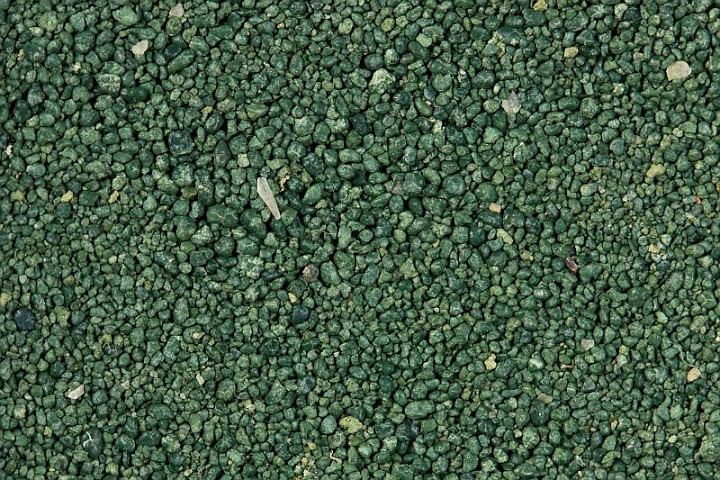
It crystallizes with a monoclinic geometry. Its name is derived from the Greek glaucos (γλαυκος) meaning 'blue', referring to the common blue-green color of the mineral; its sheen (mica glimmer) and blue-green color presumably relating to the sea's surface. Its color ranges from olive green, black green to bluish green, and yellowish on exposed surfaces due to oxidation. In the Mohs scale it has hardness of 2. The relative specific gravity range is 2.4 - 2.95. It is normally found in dark green rounded brittle pellets, and with the dimension of a sand grain size. It can be confused with chlorite (also of green color) or with a clay mineral.Glauconite has the chemical formula – (K,Na,Ca)1.2-2.0(Fe+3,Al,Fe+2,Mg)4(Si7-7.6Al1-0.4)020(OH)2.nH2O
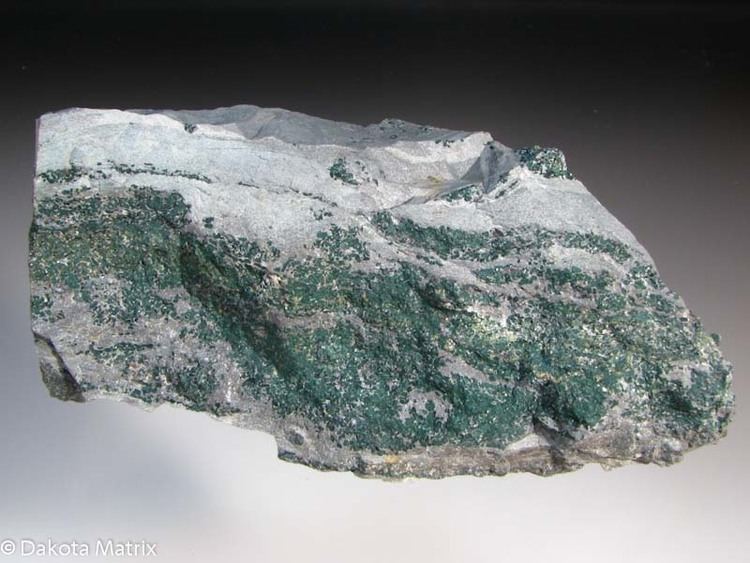
Glauconite particles are one of the main components of greensand and glauconitic sandstone, and glauconite has been called a marl in an old and broad sense of that word. Thus references to "greensand marl" sometimes refer specifically to glauconite. The Glauconitic Marl formation is named after it, and there is a Glauconitic Sandstone formation in the Mannville Group of Western Canada.

Environment of formation
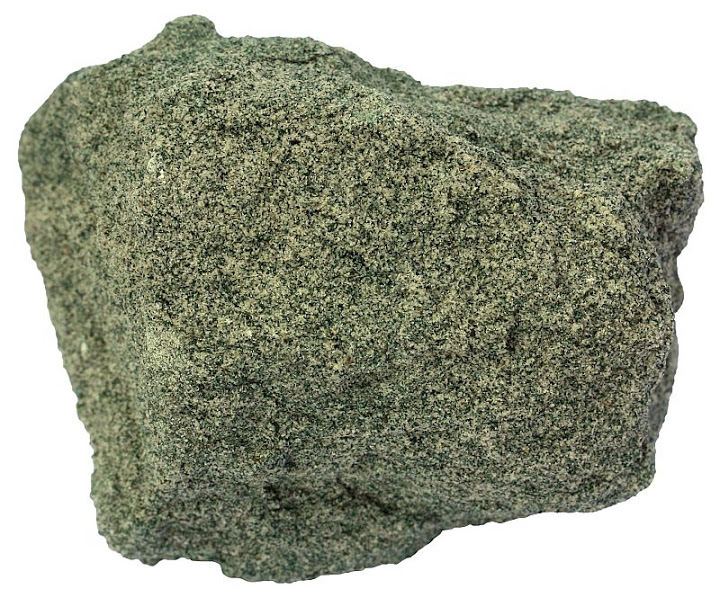
Normally, glauconite is considered a diagnostic mineral indicative of continental shelf marine depositional environments with slow rates of accumulation. For instance, it appears in Jurassic/lower Cretaceous deposits of greensand, so-called after the coloration caused by glauconite. It can also be found in sand or clay formations, or in impure limestones and in chalk. It develops as a consequence of diagenetic alteration of sedimentary deposits, bio-chemical reduction and subsequent mineralogical changes affecting iron-bearing micas such as biotite, and is also influenced by the decaying process of organic matter degraded by bacteria in marine animal shells. Glauconite forms under reducing conditions in sediments and such deposits are commonly found in nearshore sands, open oceans and the Mediterranean Sea. Glauconite remains absent in fresh-water lakes, but is noted in shelf sediments of the western Black Sea.
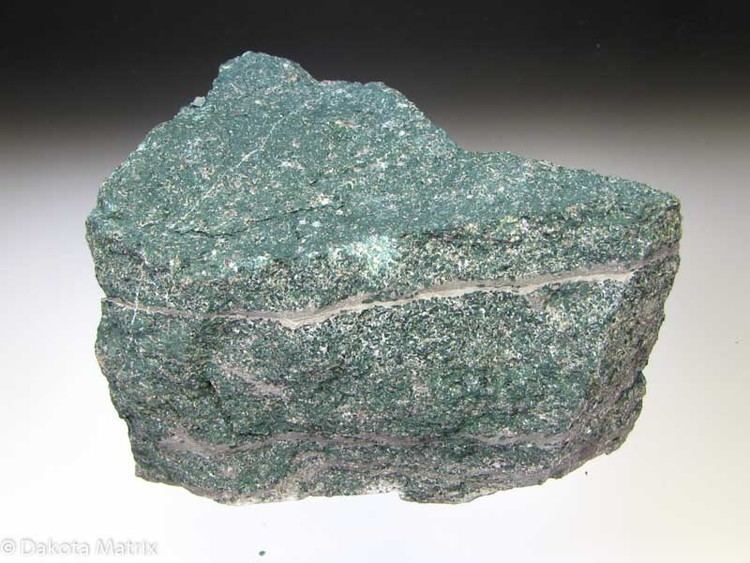
The wide distribution of these sandy deposits was first made known by naturalists on board the fifth HMS Challenger, in the expedition of 1872–1876.
Uses
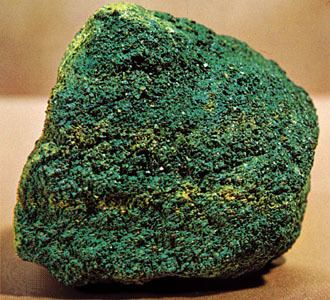
Glauconite has long been used in Europe as a green pigment for artistic oil paint under the name green earth. One example is its use in Russian "icon paintings", another widespread use was for underpainting of human flesh in medieval painting. It is also found as mineral pigment in wall paintings from the ancient Roman Gaul. Glauconite, a major component of greensand, is also a common source of potassium in plant fertilizers and is also used to adjust soil pH. It is used for soil conditioning in both organic and nonorganic farming, whether as an unprocessed material (for mixing in at proper proportions) or as a feedstock in the synthesis of commercial fertilizer powders.
